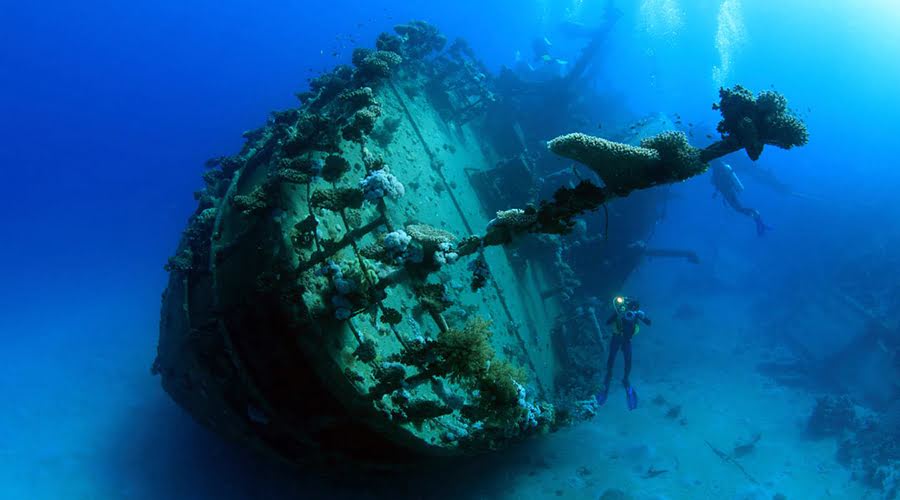
SS Thistlegorm
The Thistlegorm, on the west coast of the Sinai Peninsula and 40 km from Sharm El Sheikh, is the best known and most popular Wreck dive in the Red Sea. The 125m long British army freighter sank after just 18 months of her launch in April 1940. Her last voyage commenced on the 2nd of June 1941 as she sailed to Alexandria and was loaded with wartime supplies during World War II. A long list of inventory includes armored tracked vehicles, aircraft, armored vehicles, Jeeps and Bedford trucks. In spite of being privately owned and operated, the HMS Thistlegorm was nevertheless fitted with a 4" anti-aircraft gun and a heavy caliber machine gun when she was drafted for war duty. But it was never to be. In the early hours of 6th October 1941 the Thistlegorm was split in 2 and sank almost instantly after being hit by 2 bombs from a German long range bomber. The hit only blew a hole in the port side of hold number 5 but then cargo tank ammunition ignited, causing the bulk of the damage.







